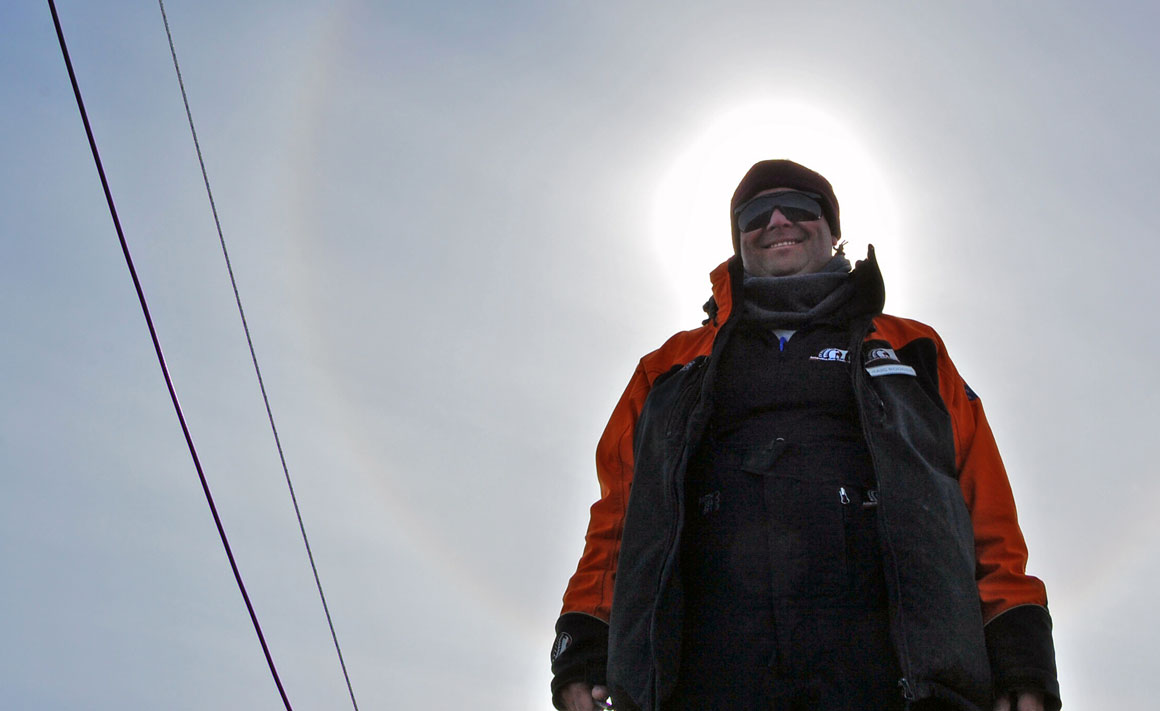
Professor Craig Rodger is achieving internationally significant results in the ultimate global arena – space.
It's difficult to conceive of anywhere bigger than space. So researchers need to think very big indeed to investigate how our planet fits in with what's happening all around it.
Whether gathering data on Earth or in space itself, the scale of operations required is so massive that, in many cases, it is considered prohibitively expensive.
But space researcher Professor Craig Rodger (Physics) is getting globally-significant results with limited funds by using smart thinking and international networking.
“In order to understand what is happening we need multiple measurements, preferably both from space and from around the world,” says Rodger. “That needs collaboration on a grand scale.”
A decade ago Otago's Rodger and co-principal investigator Mark Clilverd, of Cambridge's British Antarctic Survey, started a global network to collect information that could shed light on how the interaction of space, the Sun and the Earth's atmosphere affects all kinds of phenomena, from climate change to communications and navigation.
Now more than a dozen countries are directly active in their AARDDVARK programme, which has generated more than 50 papers for Rodger, involving almost 200 other authors across the world.
Rodger makes no apologies for the catchy acronym, which helps when you're dealing with a mouthful of a title like the Antarctic-Arctic Radiation-belt (Dynamic) Deposition – VLF Atmospheric Research Konsortium. “Science needs marketing just like anything else. Even NASA is now giving its spacecraft cool names.”
AARDDVARK members use the upper atmosphere as a giant particle detector to monitor very low frequency radio waves. Analysing changes gives an insight into energy flows on our world and beyond.
By listening to signals from powerful transmitters already in use around the world – such as those used for military applications like communicating with nuclear submarines – researchers don't have to send out their own signals and so need only relatively inexpensive receivers to collect anomalies for study.
Careful analysis can identify amazingly distant sources of interruptions to transmissions – such as some caused by a gamma-ray flare from a neutron star 23,000 light years away.
“The research method has been around for a long time, but the scale of our operation and the way we are using it around the world is unique,” says Rodger. “It's also a lot cheaper than spending millions of dollars on building, launching and maintaining our own satellites to gather data. We just can't afford that.”
But Rodger and his co-researchers do have access to some satellite data through collaborations. Rodger is currently on a Fulbright Fellowship in the USA, where one of his projects is working on data analysis with NASA.
“The Americans are very generous with the information they gather. Back at Otago I'll be able to teach my students how they're using data from a two-satellite mission costing $680 million.
“It's important to improve our skills in analysing satellite data as we need space-based research as well as ground-based information from transmitters and receivers. Multiple methods, multiple places and multiple partners give us better results.”
Those results provide insights into a wide range of hot topics.
“Trying to understand climate change is the most important scientific problem facing humanity today. The Sun has a small role to play in this and right now it's particularly interesting because solar flares and other solar outputs, which have an 11-year cycle, are currently at maximum activity.
“Hot particles smash into our atmosphere with enormous force and change its chemical composition, depleting the ozone layer and affecting polar winds, with repercussions varying from increasing the risk of skin cancer to affecting climate.
“These flares can change our climate quite naturally, so we need to know more about the processes so we can improve our modelling and prediction capabilities. It's important to understand what part this natural variation plays, quite apart from the enormous changes mankind is causing.”
Gaining a better understanding is also important for the operators of commercial satellites used for such things as weather or television, as electrons from solar flares can fry $200-million satellites, causing them to malfunction or knocking them out completely.
They can also affect navigation, communications and GPS tracking because of the way they change the atmosphere that signals have to travel through.
“What happens in space has a strong influence on our highly technological civilisation.”
Space first influenced Rodger as a child when he was allowed to stay up late to watch the first space shuttle being launched. He grew up with the Voyager programme sending craft into space to visit new planets. While studying physics at Otago he found a door marked Space Physics Research – and there was no turning back.
After completing his PhD at Otago, he did postdoctoral work at the British Antarctic Survey in Cambridge, where he began to build the network of collaborators that developed into AARDDVARK on his return to New Zealand.
Rodger keeps in touch with co-researchers with masses of emails, frequent attendances at conferences, a lot of international travel and plenty of Skyping with his postgraduate students.
If that were not enough to keep him busy, he'll soon be taking over as head of the Department of Physics as well. But he is used to thinking big.
“In space physics the normal situation is that the system of Earth, Sun and space between is so big that satellite and ground-based researchers have to work together. It's a global effort.
“When you are dealing with worldwide data, worldwide collaboration is the only way to go.”
Funding
- Marsden Fund
- European Union
- Antarctica New Zealand
- University of Otago
- Fulbright Fellowship
